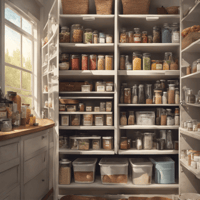One more year! One more year! No, I’m not talking about a Celtics repeat. I’m talking about the...
Maximizing Dorm Room Potential for Single, Double, and Triple Occupancies
As summer draws to a close and the excitement of a new school year looms, many parents and college students are faced with the daunting task of setting up a dorm room. Dorm rooms, often known for their limited space, can present unique challenges. However, with some thoughtful planning and clever organizing strategies, you can transform even the smallest dorm room into a comfortable and functional living space. Whether your student is moving into a single, double, or triple room, here are some tips to help maximize their space and create a home away from home.
Single Room: Creating a Personal Oasis
-
Prioritize Multi-Functional Furniture
In a single room, every piece of furniture needs to pull double duty. Look for items like a lofted bed with a desk underneath or a futon that can serve as both a sofa and a guest bed. Multi-functional furniture saves space and offers more versatility in how the room can be used.
-
Utilize Vertical Space
When floor space is limited, think vertically. Install shelving units or hanging organizers to store books, decor, and other essentials. Command hooks and adhesive strips are perfect for hanging items without damaging walls. Consider a pegboard for a customizable organization system that can hold anything from school supplies to accessories.
-
Optimize Closet Space
Closet space in dorms is notoriously small. Use hanging organizers, stackable bins, and space-saving hangers to maximize the closet’s capacity. Over-the-door shoe organizers are excellent for holding shoes, cleaning supplies, or even snacks.
-
Create Zones
Even in a small room, creating distinct zones for different activities can make the space feel more organized and functional. Designate areas for studying, sleeping, and relaxing. Use rugs or curtains to visually separate these zones if possible.
-
Under-Bed Storage
The space under the bed is valuable real estate. Invest in bed risers to create more room for storage bins or drawers. This space can be used for off-season clothes, extra bedding, or even a mini fridge.
-
Minimize Clutter
Encourage your student to only bring essentials. Before packing, make a list of must-have items and stick to it. Regularly declutter and reevaluate what’s truly needed to keep the room from feeling cramped.
Double Room: Harmonizing Shared Spaces
-
Coordinate with the Roommate
Before moving in, have your student communicate with their roommate about who will bring what. This can help avoid duplicate items and ensure that the room is equipped with essentials without overcrowding the space.
-
Bunk Beds or Lofted Beds
Consider bunking or lofting the beds to free up floor space. Lofted beds create room for desks or seating areas underneath, while bunk beds can open up space for communal areas or extra storage.
-
Shared Storage Solutions
Invest in shared storage solutions like a large bookshelf, storage ottomans, or a shared dresser. Clearly define personal and shared spaces to avoid confusion and keep the room organized.
-
Divide the Space
Use furniture or room dividers to create a sense of personal space within the shared room. A bookshelf or curtain can act as a partition, giving each roommate a bit of privacy and a personal area to decorate.
-
Communal Zone
Designate a communal area for socializing, studying, or relaxing. This could be a small seating area with bean bags or a futon. Having a shared space can help build a stronger roommate relationship and provide a clear area for collaboration or downtime.
-
Personalize Your Space
Encourage each roommate to personalize their own side of the room. This not only makes the space feel more like home but also helps define personal territories, which can be important in a shared environment.
Triple Room: Strategizing for Three
-
Triple Bunk Beds or Lofted Beds
In a triple room, space is even more limited. Triple bunk beds or lofted beds can be a lifesaver, creating much-needed floor space for desks and storage.
-
Strategic Furniture Placement
Carefully plan the layout of the room. Place desks and dressers against the walls to open up the center of the room. Consider arranging the beds in an L-shape or U-shape to maximize space and create distinct zones.
-
Collaborative Storage
In a room with three people, collaborative storage solutions are crucial. Use large, shared storage units for communal items and clearly label personal storage areas to keep things organized. Hanging closet organizers and under-bed storage can help each person maximize their allotted space.
-
Maximize Wall Space
Every inch counts in a triple room. Use wall-mounted shelves, hooks, and pegboards to keep items off the floor and desks. Over-the-door organizers can also provide extra storage for shoes, toiletries, and accessories.
-
Establish Ground Rules
Living with two roommates requires clear communication and established ground rules. Discuss cleaning schedules, noise levels, and personal space boundaries to ensure a harmonious living environment.
-
Create a Study Nook
Designate a quiet area for studying. This could be a corner with a desk and comfortable chair, or even a communal study area with a large table. Having a dedicated study space can help all roommates stay focused and productive.
Setting up a dorm room, whether it's a single, double, or triple, can be a challenging but rewarding experience. With careful planning, smart storage solutions, and a focus on creating distinct zones, you can help your student make the most of their space. Remember, the key is to balance functionality with personal style, creating a space that feels both practical and like home. By implementing these tips, your college student will be well-prepared to start the school year in a comfortable and organized environment.


